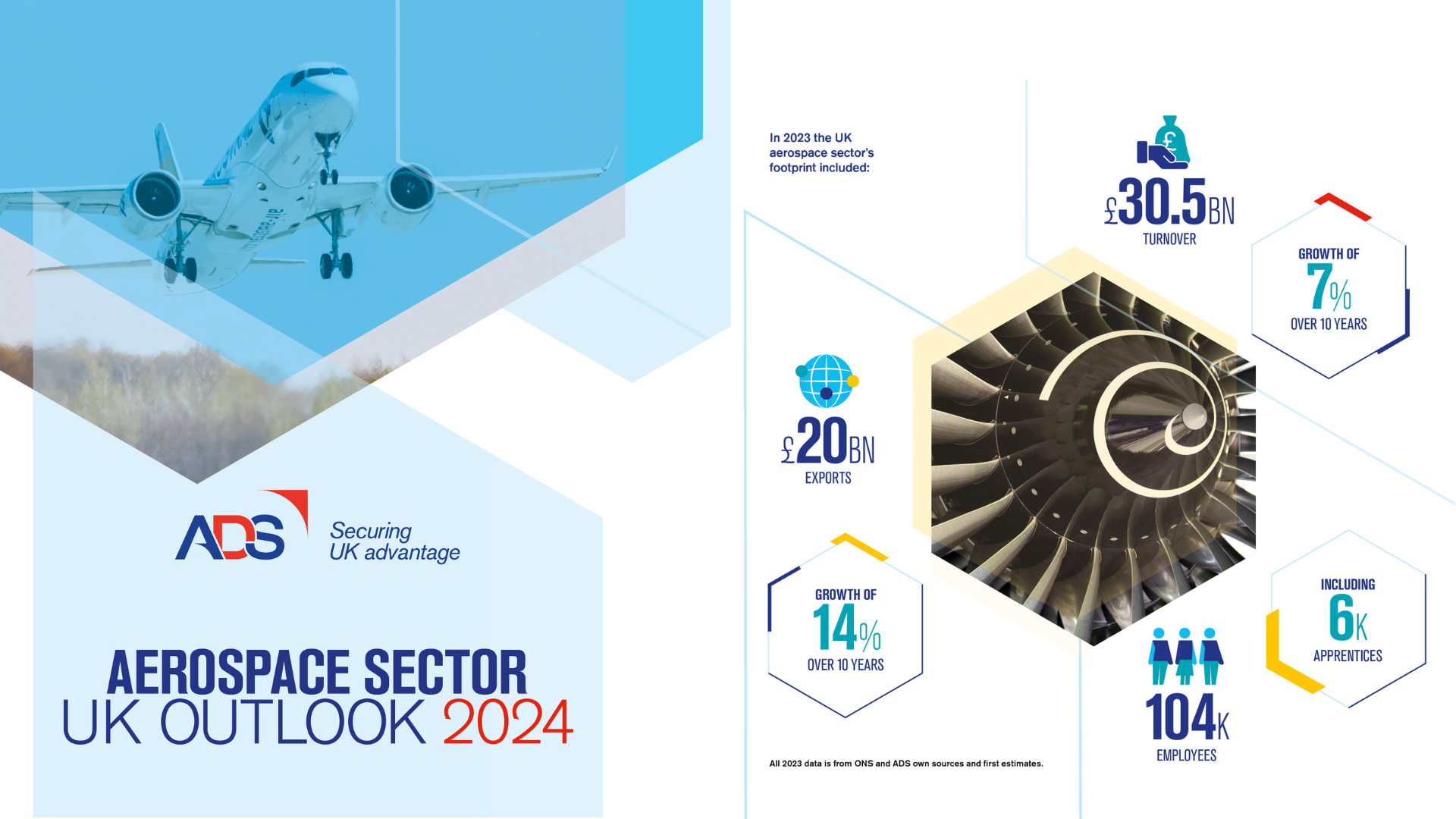ADS Aerospace Sector UK Outlook 2024
IFA Comments: IFA agrees that there needs to be alignment between the major aviation authorities across the globe.

Today we launch the UK Aerospace Outlook 2024 offering our annual guide to the sector.
The UK Aerospace Sector is at the cutting edge of transport innovation. It is a hub for advanced manufacturing, generating well-paid jobs across the country and driving sustainability and technological innovation forward.
It directly employs 104,000 people in the UK and supports 6k apprentices across the sector. Business turnover is now £30.5bn which reflects a growth of 7% over 10 years. Exports account for a healthy proportion of the turnover, totalling £20bn.
To Ensure the long term success of UK Aerospace, the sector needs to focus on:
The Sustainability Agenda
Reducing and minimising the environmental impact of UK aerospace is pivotal to the future of the sector. The AGP’s Destination Net Zero Strategy and the 2022 Jet Zero Strategy combined set out the UK’s ambitions for achieving net zero in aviation.
New aircraft technology will play a significant role in decarbonising the sector, as will improvements to existing technologies. These range from lighter materials and the reduction in contrails, to disruptive capabilities, including the use of hydrogen.
The sector, with support from the Aerospace Technology Institute (ATI), continues to develop new technologies in the pursuit of Net Zero. Through ATI’s Hydrogen Capability Network, test infrastructure, research and skills have been identified as the three key enablers, while other considerations such as infrastructure requirements are addressed.
Similar infrastructure considerations are being made for the deployment of Sustainable Aviation Fuel (SAF) – fuel derived from sustainable feedstocks, and one of the largest potential levers to reduce net carbon emissions.
The UK has committed to the introduction of a SAF Mandate, requiring aircraft operators to use 10 percent SAF by 2030. The UK is dedicated to growing its SAF industry, to take advantage of potential employment opportunities but also to provide a reliable source of domestically produced SAF.
The Regulatory Agenda
As new aerospace technologies evolve, maintaining an effective and agile regulatory framework is crucial to support innovation while ensuring safety remains the highest priority. The introduction of Advanced Air Mobility (AAM), electric Vertical Take Off and Landing (eVTOL) vehicles, and Unmaned Aircraft Systems (UAS), represents a significant leap forward that must be integrated into the market.
The UK Civil Aviation Authority (CAA) has a pivotal role, acquiring greater independence and authority in rulemaking and certification in recent years. Ensuring alignment with the European Union Aviation Safety Agency (EASA) is essential for simplifying operations and reducing barriers for UK companies. Simultaneously, fostering a closer relationship with the US Federal Aviation Administration (FAA) could unlock substantial market opportunities.
The future of flight hinges on the safe commercialisation and deployment of new technologies such as batteries and autonomous systems, and the seamless integration of new advanced air mobility. To realise this potential, regulatory bodies like the CAA must adapt swiftly and effectively to certify these novel aircraft. The collaboration between the CAA and industry stakeholders, such as ADS, in aligning with international regulations, is vital for creating an attractive, safe and efficient certification process.
The Capacity Agenda
The industry must navigate several challenges, including supply chain shocks, workforce shortages, the availability of cash and long-term capital, and macroeconomic headwinds to achieve the required production rates.
The aerospace supply chain is extensive and intricate. Strengthening supply chain resilience is paramount, involving diversifying suppliers, investing in local manufacturing capabilities, and improving logistics and inventory management. Addressing workforce shortages is crucial, including initiatives to make aerospace careers more appealing.
With multi-decade long investment cycles, aerospace companies need substantial financial resources to scale up operations, invest in new technologies, and expand manufacturing facilities. Access to affordable and appropriate financing and investment from both public and private sectors can provide the necessary capital to support sector growth.




